RoadCraft review – A smoother Spintires spin-off with rough AI edges
RoadCraft takes the off-road sim DNA of Spintires and its successors and streamlines it into a construction-focused game with more relaxed driving, less punishing mechanics, and a heavier emphasis on logistics and building. While it trims down some of the hardcore elements long-time players might expect, it replaces them with satisfying road-building, disaster recovery, and resource hauling. The biggest hitch is the AI-controlled trucks, which can’t handle even small obstacles without player intervention, turning them into frustrating babysitting duties. When you’re in control, RoadCraft is at its best; when you’re relying on your AI fleet, it can be the weakest entry in the series.
Based on VG247’s review, RoadCraft is the latest from Saber Interactive in the Spintires lineage, following MudRunner, SnowRunner, and Expeditions. It keeps the series’ physics-driven terrain traversal but shifts focus to running a construction company tasked with restoring regions struck by natural disasters like floods, earthquakes, and hurricanes. You start by naming your firm and picking a logo, then hit the maps, which are free-roam between jobs. This open-world element is a notable improvement over Expeditions, where movement was more mission-restricted.
A session often begins in your scout 4x4, zipping across muddy hills, forest trails, and riverbanks to assess the situation. You’ll locate blocked routes, damaged infrastructure, and resource deposits before returning to your base to plan the rebuild. From there, the work splits into several recurring job types — scouting, logging, bridge and road construction, plotting AI delivery routes, debris clearing, and transporting building materials to specific sites.

Vehicle Handling and Mechanics
The most obvious change from earlier Spintires games is that RoadCraft removes some of the survival-sim layers. Vehicles don’t need fuel management, and damage isn’t a concern unless you flip, drown, or wedge yourself beyond recovery. This makes the game friendlier for newcomers, but veterans will notice the lack of tension that came from scraping through missions on the last drops of diesel or improvising repairs with limited parts.
While there’s no in-depth upgrade system, vehicles still have distinct roles and capabilities. The Mule T1 crane cargo truck quickly emerges as a player favorite thanks to its versatility: good off-road stats, a built-in crane, and enough cargo space for most delivery jobs. It remains viable deep into the midgame, which also highlights one of RoadCraft’s weaker points — a thin vehicle roster with minimal variety at each tier.
Unlocks often come in three versions: a rusty beginner model, a refurbished mid-tier version, and a late-game variant with slightly better stats. New vehicle types, like a heavy crane truck and high-capacity hauler, appear around the halfway mark, but many categories, such as field service trucks, see only one meaningful upgrade — and often not until you’re near the end of available content.

Core Job Loops
Where RoadCraft shines is in the execution of its main activities. Road building is the most elaborate and satisfying, broken into four stages: dumping sand with a tipper, leveling it with a bulldozer, laying asphalt with a paver, and smoothing it with a steamroller. Each step can be done manually for full control or automated for short stretches, although the AI will occasionally fail if there’s debris or uneven terrain in the way. Dropping sand evenly is particularly tricky, requiring careful pacing and positioning to avoid uneven layers that cause trouble in later steps.
Logging has a similar multi-stage charm. You use a tree harvester to fell timber, a log hauler to transport the trunks, and a stump mulcher to clean the site. The animations and physics give it a tangible feel — logs shift on uneven ground, and overloading your hauler can make it sluggish on hills.
Electrical line installation is less complex but still offers challenges. The cable layer vehicle is comically awkward to steer, especially in forested or hilly areas, and it’s easy to get caught on obstacles. Planning routes carefully helps, but part of the fun comes from wrestling with its stubborn handling.
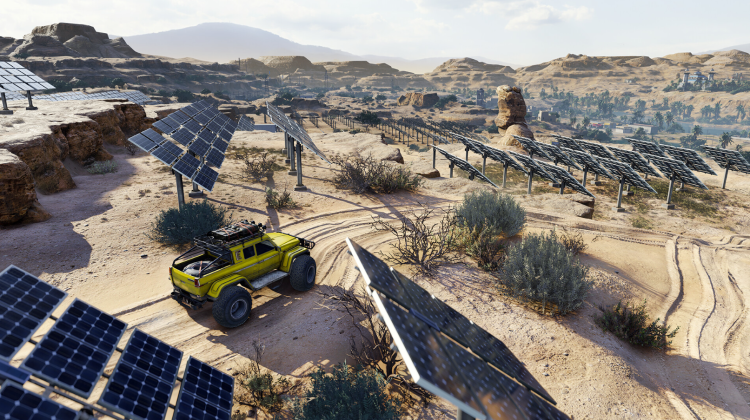
Resources and Deliveries
Most rebuild projects require one or more of the four core resources: logs, steel beams, metal pipes, and concrete slabs. These can be salvaged from debris or manufactured at facilities you repair as part of your contracts. Because loading is fully manual, there’s a satisfying rhythm to positioning your crane, swinging the cargo into place, and securing it before heading out.
The delivery phase is where the game’s biggest frustration emerges — the AI trucks. You can assign deliveries to them once you’ve cleared and built a route, but their driving skills are minimal. Small rocks, uneven ground, or tight turns can halt them entirely. Instead of trying alternate maneuvers, they often stop until you physically push or tow them. This transforms what should be a time-saving system into an escort mission. In some cases, it’s faster to make the delivery yourself than to clear a perfect route for AI haulers.
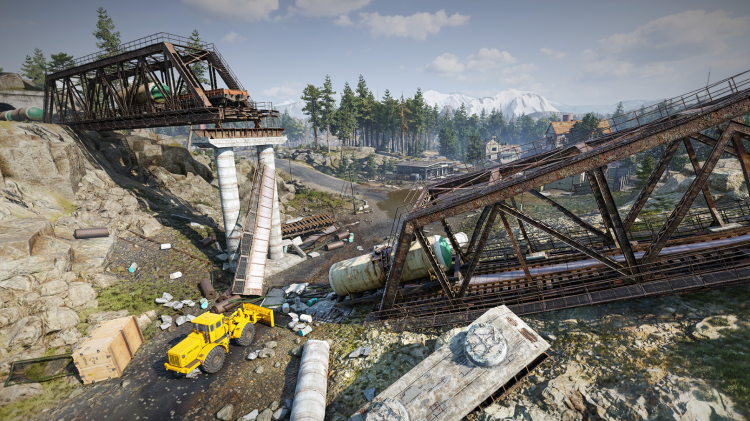
Difficulty and Progression
Without fuel or repair management, and with generous XP and cash rewards, RoadCraft is the easiest Spintires entry to date. The exception is when AI behavior forces you into time-consuming rescues. For players who prefer a more methodical approach — clearing every obstacle and grading roads to perfection before sending trucks out — this might not be an issue. For others, it can feel like artificial difficulty replacing genuine skill challenges.
Leveling up unlocks vehicles, contracts, and map expansions. Because upgrades are limited, progression relies more on gaining access to new job types and larger-scale projects. This gives the midgame a steady flow of new activities but means vehicle enthusiasts may find less to chase.
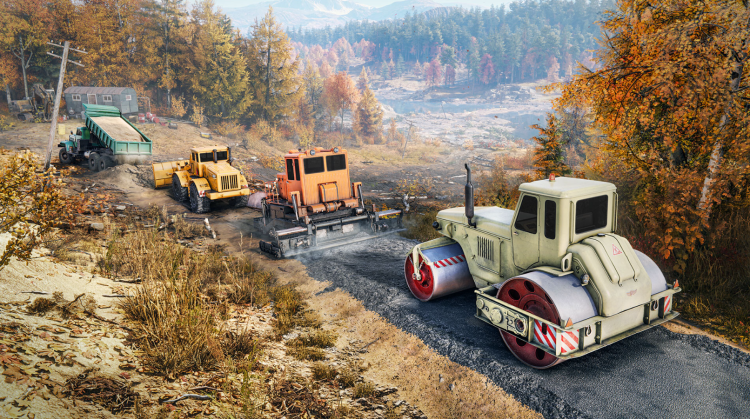
Map Design and Exploration
Each map offers a mix of natural and disaster-related hazards — from washed-out roads and downed bridges to landslides blocking mountain passes. The free-roam design encourages detours and creative problem-solving. Even without the survival-sim pressure, navigating a loaded truck through mud pits, rocky slopes, or shallow rivers remains engaging thanks to Saber’s terrain deformation and vehicle physics systems.
Weather and environmental variety add flavor. Heavy rain can make a route more treacherous, while dry conditions might open shortcuts across previously impassable ground. Lighting effects during dusk or night missions enhance the atmosphere, especially when headlights cut through fog over a half-built bridge.
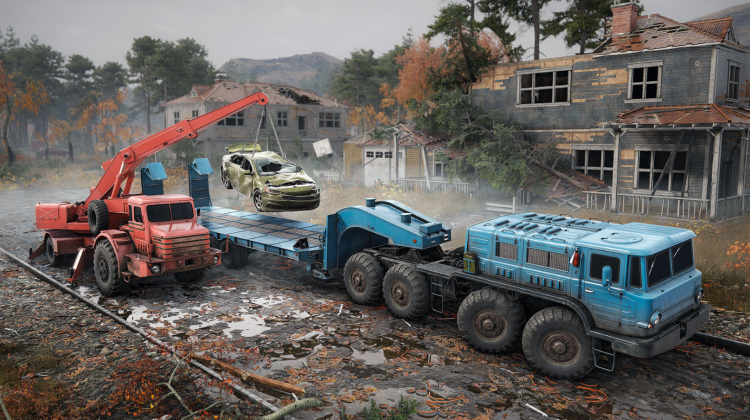
Strengths and Weaknesses
The strongest parts of RoadCraft are its hands-on construction sequences, the tactile satisfaction of loading and delivering resources, and the freedom to tackle objectives in your own order. It’s approachable for newcomers and still offers enough complexity to keep fans engaged — provided they accept the reduced survival elements.
Its weakest aspects are tied to AI — both the limited vehicle roster progression and the poor autonomous driving. While the game encourages using AI trucks to manage logistics, their frequent inability to complete even simple routes without intervention often defeats the purpose. This not only adds tedium but also undercuts the feeling of running a competent construction firm.
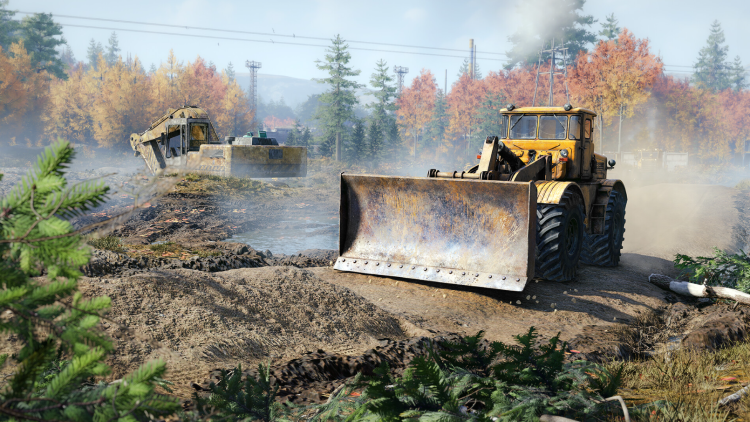
Verdict
RoadCraft may not replace SnowRunner for those who crave maximum challenge and survival tension, but it successfully carves out a niche as a more relaxed, process-oriented take on the formula. The stripped-down systems and AI missteps hold it back from being a must-play for all, yet its core loop — overcoming environmental challenges to rebuild a disaster-struck landscape — remains compelling.
The satisfaction of seeing your road, bridge, or powerline project completed is still there, just wrapped in a package that’s more about methodical progress than nail-biting endurance runs. If Saber improves the AI and expands the vehicle roster through updates or DLC, RoadCraft could become the go-to for players who enjoy both hauling and building without the stress of constant breakdowns and fuel shortages.
Until then, it’s a solid, if imperfect, entry in the Spintires lineage — one that trades some grit for accessibility, but still delivers the muddy, mechanical satisfaction the series is known for.

Comments